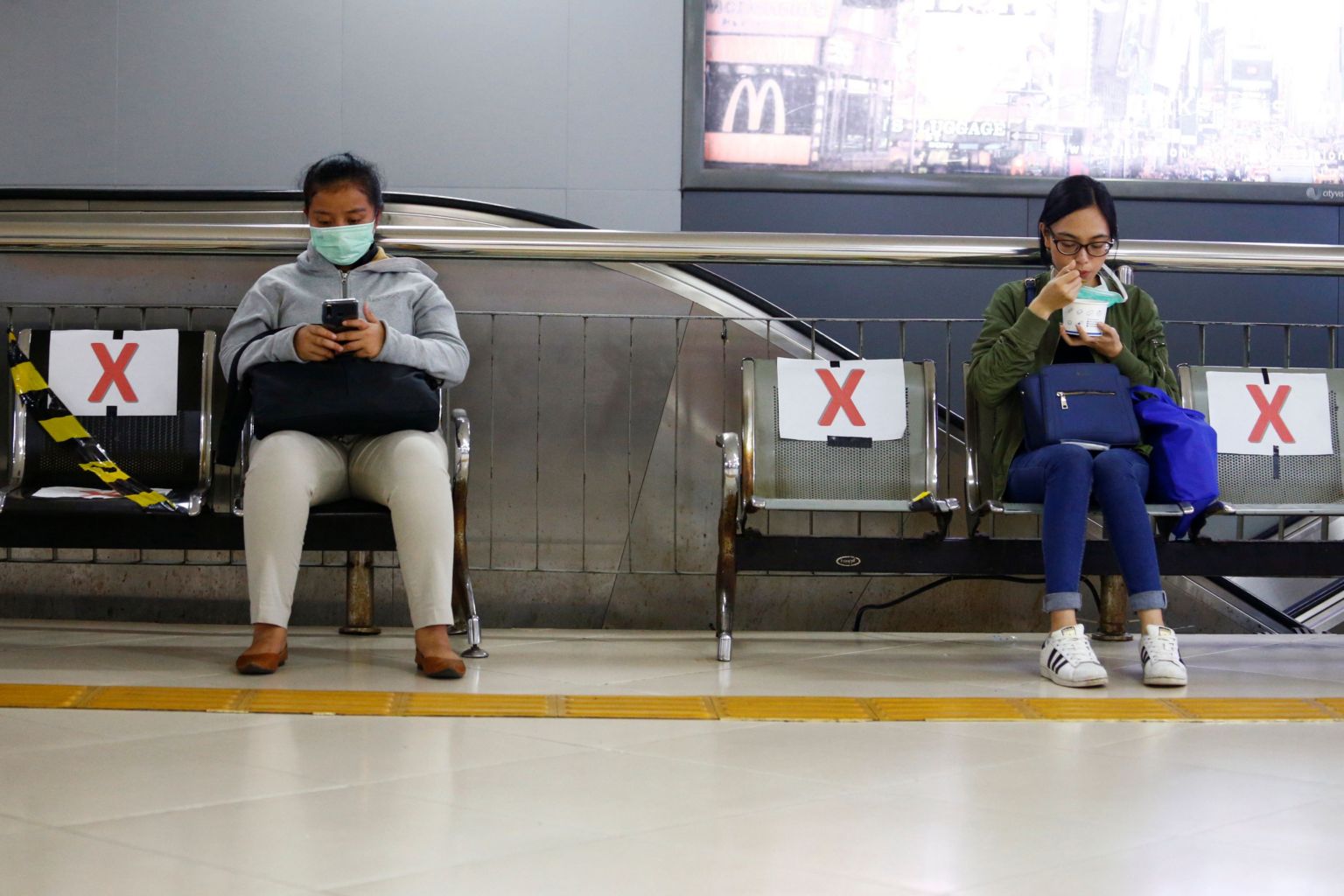Coronavirus epidemic 'far from over' in Asia, WHO official says
Sign up now: Get insights on Asia's fast-moving developments

The World Health Organisation does not expect any country to be safe, as the coronavirus will eventually get everywhere, said a spokesman.
PHOTO: REUTERS
Follow topic:
MANILA - The world faces a long battle with the coronavirus pandemic, and even nations that have been gaining ground must not let their guard down, the World Health Organisation (WHO) said on Tuesday (March 31).
"This is a pandemic unlike the world has ever seen, and it has challenged our system and put a strain on people's lives, in an unprecedented way… Let me be clear: The epidemic is far from over in Asia and the Pacific," Dr Takeshi Kasai, WHO's regional director for the Western Pacific, told reporters.
"It's unlikely this virus will disappear next week or even next month," he added. "This battle is going to be a long-term battle."
Dr Matthew Griffith, a technical adviser to WHO, said: "Some areas, through strong efforts to contain clusters and physical distancing, that were able to slow transmision like Japan, Korea, Singapore are now reporting increasing cases again. Most are imported cases. This is also a concern."
Dr Griffith also said that outbreaks were popping up in new places, with smaller Pacific nations saddled with fragile health systems now the most vulnerable.
Places such as Fiji and American Samoa still have to send their samples abroad, and that is hampered further by global travel restrictions, he said.
But there are signs of some stabilisation in Europe, as the hardest-hit country in the region, Italy, reported the smallest number of new cases in almost two weeks.
The number of new cases in Italy on Monday rose by 4,050 - the lowest amount since March 17, hitting a total 101,739 from a previous 97,689. The death toll, however, climbed by 812 to 11,591, reversing two days of declines in the daily rate.
Dr Mike Ryan, head of health emergencies at the WHO, said on Monday (March 30) that it was "our fervent hope" Italy and Spain were approaching a peak, and that European lockdowns which started several weeks ago would start to bear fruit.
"In the same way when we're told that we're looking at galaxies through a telescope that we're seeing life from a billion years ago, we're seeing a reality that existed before," he said, urging countries to step up efforts to find and isolate patients.
"It won't go down by itself. We need countries to focus on what is the strategy."
Dr Takeshi said measures such as mass testing, cluster containment, early treatments, social distancing and lockdowns "buy us valuable time to prepare for large-scale community transmission".
"There's no one size fits all… Every country is trying their best with their own context," he said, when asked which approach was proving to be most effective against the pandemic.
He took note of Singapore's robust response.
"They have a multi-layered surveillance system to monitor infections in the community. They have a system to identify cases quickly, and they have very good communication to make the Singapore people participate in this fight," he said.
Dr Takeshi said lockdowns, meanwhile, "can't continue forever".
"At some point, the government needs to think when to lift these measures," he said.
The confirmed number of cases worldwide continued to grow on Tuesday, nearing 800,000. Over 38,000 have died.
The World Bank, meanwhile, warned that if the pandemic drags on, up to 11 million people could be driven into poverty, with low wage and informal sector workers the most vulnerable.
It estimates that under the baseline growth scenario, nearly 24 million fewer people will escape poverty across the region in 2020 than would have been the case in the absence of the pandemic, using a poverty line of US$5.50 (S$7.83) a day.
And if the economic situation deteriorates further, and the lower-case scenario prevails, then prior projections estimating nearly 35 million people would escape poverty in East Asia and Pacific in 2020, including over 25 million in China alone, are essentially nullified.
"A region that's been growing at steady 6 per cent overall could see, even in our baseline scenario, as much as 4 percentage points cut off the growth rate," Mr Aaditya Mattoo, the World Bank's chief economist for East Asia and the Pacific, told journalists on Monday (March 30) in a conference call.
"And in a lower-case scenario, you could see contraction for the first time in decades, and as many as 11 million people could be driven into poverty," he said.
He added: "The worst suffering could be for informal workers, people who are... invisible and very hard to go identify, find, and help."

